Self-Care for Elderly with Stroke
How does stroke affect people?
Stroke is caused by blockage of blood supply to the brain. Reduced blood flow leads to insufficient oxygen and nutrient supply and hence damage or even death of brain cells. As a result, there is a loss of certain brain functions such as control over limb movement and speech, which hinders the self-care abilities of the clients. In fact, most people with mild stroke can be independent in self-care and even resume work after treatment. However, people with severe stroke may lose their ability to live independently.
(Please refer to the following webpage for the causes, symptoms and prevention methods of stroke: https://www.elderly.gov.hk/english/health_information/hypertension_heart_disease/stroke.html)
Learning and adapting new lifestyle after stroke
People with stroke should learn and adapt to their new lifestyle with a positive attitude to overcome their disabilities caused by stroke. Occupational therapists facilitate people with stroke to improve their self-care ability through training in adapted skill of activities of daily living (ADL), use of assistive devices and home assessment and modification.
How can people with stroke improve their self-care ability?
Basic ADL comprises feeding, grooming, dressing, toileting, and bathing.
I. Adapted skill in ADL & use of assistive devices
1. Feeding
Aim: To facilitate feeding and avoid choking
Remarks:
- Carers should observe the client's ability and process in feeding
- During feeding, client should have proper positioning: sit upright with the head slightly flexed and chin down, which can prevent food from wrongly slipping into the trachea; do not lie down to eat
- Avoid food which is too dry, too slippery, too large, or sticky e.g. glutinous dumplings
- Feeding aids such as the Scooper bowl (Fig. 1) has a special curved design so that people who eat with one hand can easily scoop up food, and the food will not leak out; the non-slip mat (Fig 2) has anti-slip function, which allows the plate/bowl to firmly fix on the table and not shift during eating, allowing clients to eat in a relaxed state.
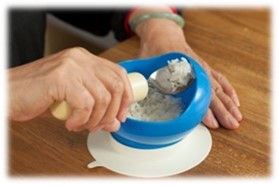
Fig.1 Scooper bowl
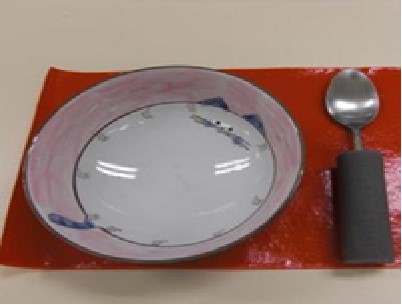
Fig.2 Non-slip mats
2. Grooming
Aim: To facilitate grooming
Remarks:
- Learn one-hand techniques, e.g. twist the towel with one hand (Fig 3): hang the towel on the faucet with your good hand, then turn the towel clockwise and twist it dry
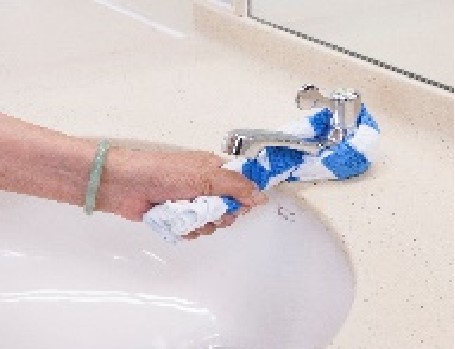
Fig.3 One-handed twisting towel technique - Using suitable grooming aids e.g. the long-handled comb (Figure 4) has a longer handle and has an ergonomic arc design, which is convenient for clients with limited arm movement to comb their hair so that clients can groom more easily
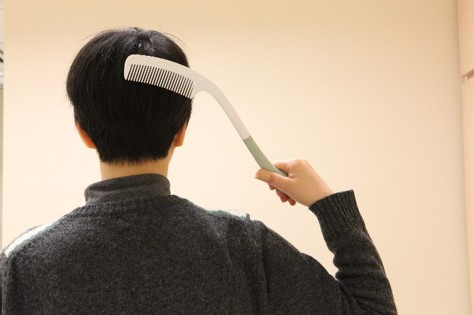
Fig.4 Long-handled comb
3. Dressing
Aim: To facilitate dressing
Remarks:
- Learn one-handed technique and skills of putting on or taking off clothes e.g. when putting on clothes, put on the sleeves on the affected side first, followed by the unaffected side; when undressing, do the opposite, take off the clothes on the unaffected side first, and then take off the sleeves on the affected side. (Figure 5)
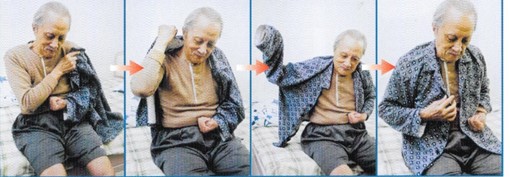
Figure 5: One-handed dressing technique - Wear simple and loose fitting garments e.g. trousers with elastic band and footwear with Velcro.
- Use dressing aids & make adaptations to clothing, e.g. using large buttons or Velcro instead of buttons
4. Toileting
Aim: To facilitate toileting and prevent fall
Remarks:
- Learn special techniques and procedures to transfer to and from a toilet e.g. the normal limbs of the client who uses wheel chair should be placed near the toilet so as to facilitate transfer.
- Selection of assistive devices for easier and safer toileting, e.g. a commode chair (Figure 6) is a chair with a commode and a cover. It is usually placed next to the bed to facilitate clients' toileting at night, which helps to improve the safety of toileting and reduce accidental falls
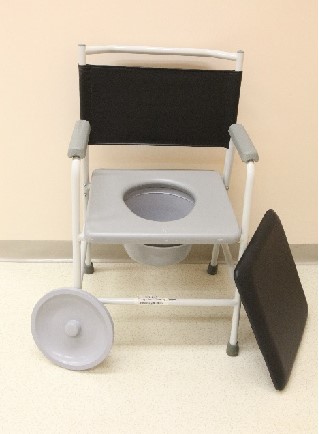
Figure 6. Commode Chair
5. Bathing
Aim: To facilitate bathing and prevent fall
Remarks:
- Increase awareness to environmental safety and prevention of falls.
- Use bathing aids e.g. handrail (Figure 7) to help clients maintain balance during showering; shower chairs, non-slip mats and long-handled brushes (Figure 8) can help clients to bath easily and safely
- Suggest to convert the bathtub into a shower stall
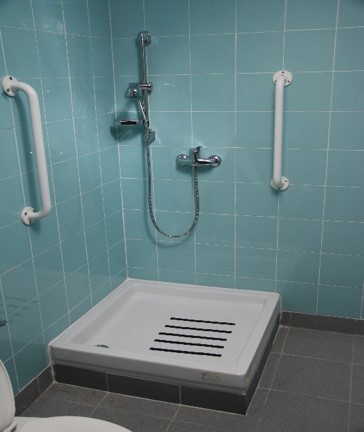
Fig.7. Handrail in shower stall
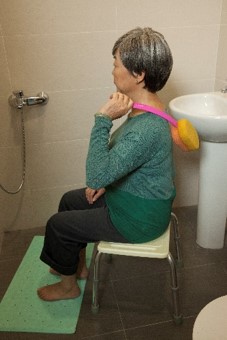
Fig.8. Shower chair, non-slip mat and long handled brush
After learning the skill and steps of self-care, clients with stroke should practice regularly in their daily living.
II. Home Assessment
Occupational therapists will assess the client's ability and home environment through the home assessment service, and then suggest suitable assistive devices for daily living and home modification that meet the client's needs, such as installing handrails and adding ramp to improve the client's self-care ability and also the quality of life. The above only mentions some of the assistive devices for daily living. If you have any questions about the selection of assistive devices for daily living and home assessment services, please consult an occupational therapist.